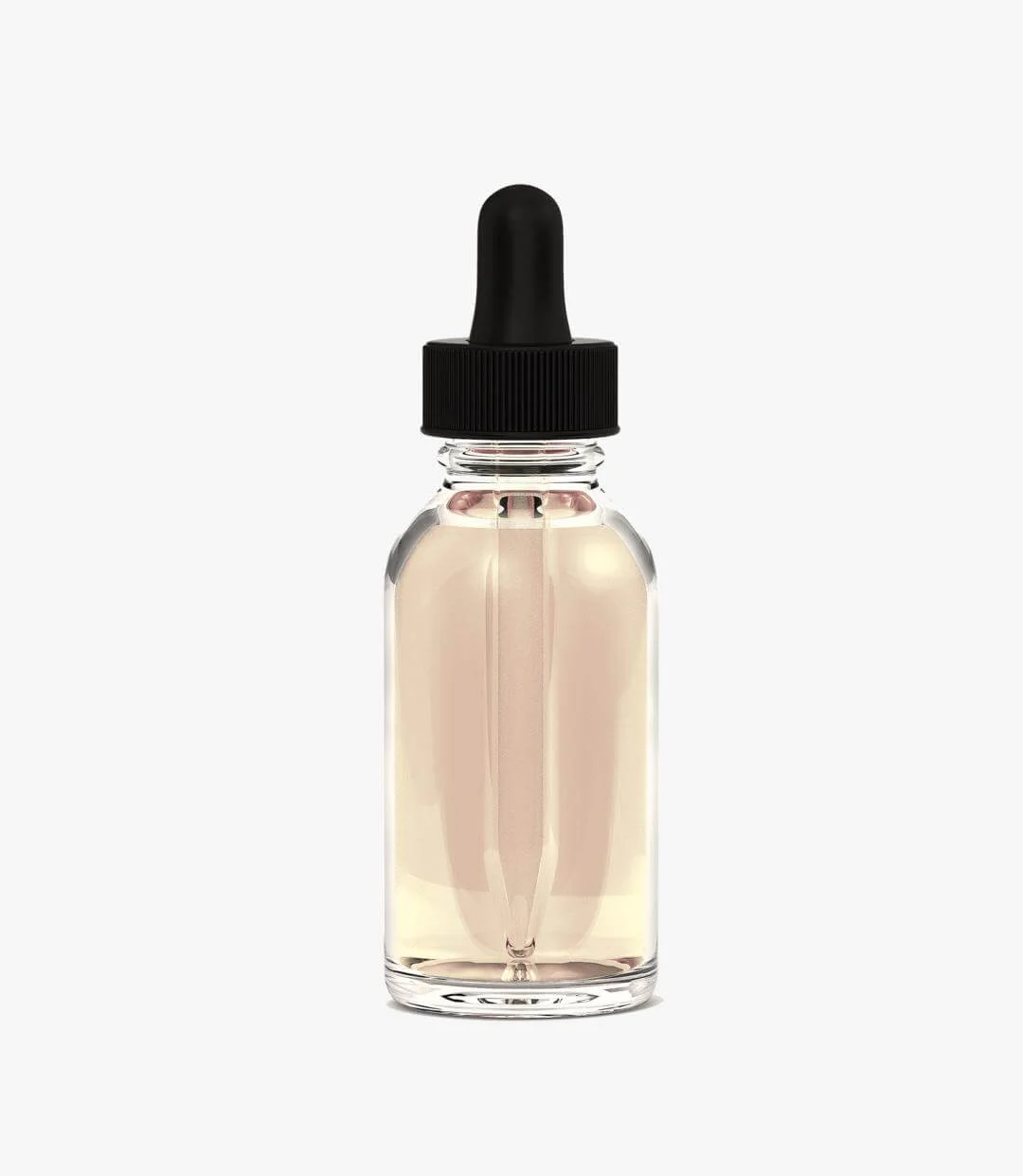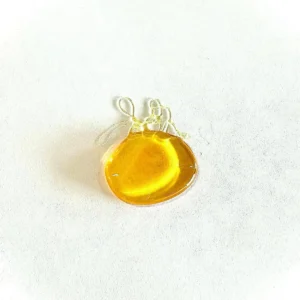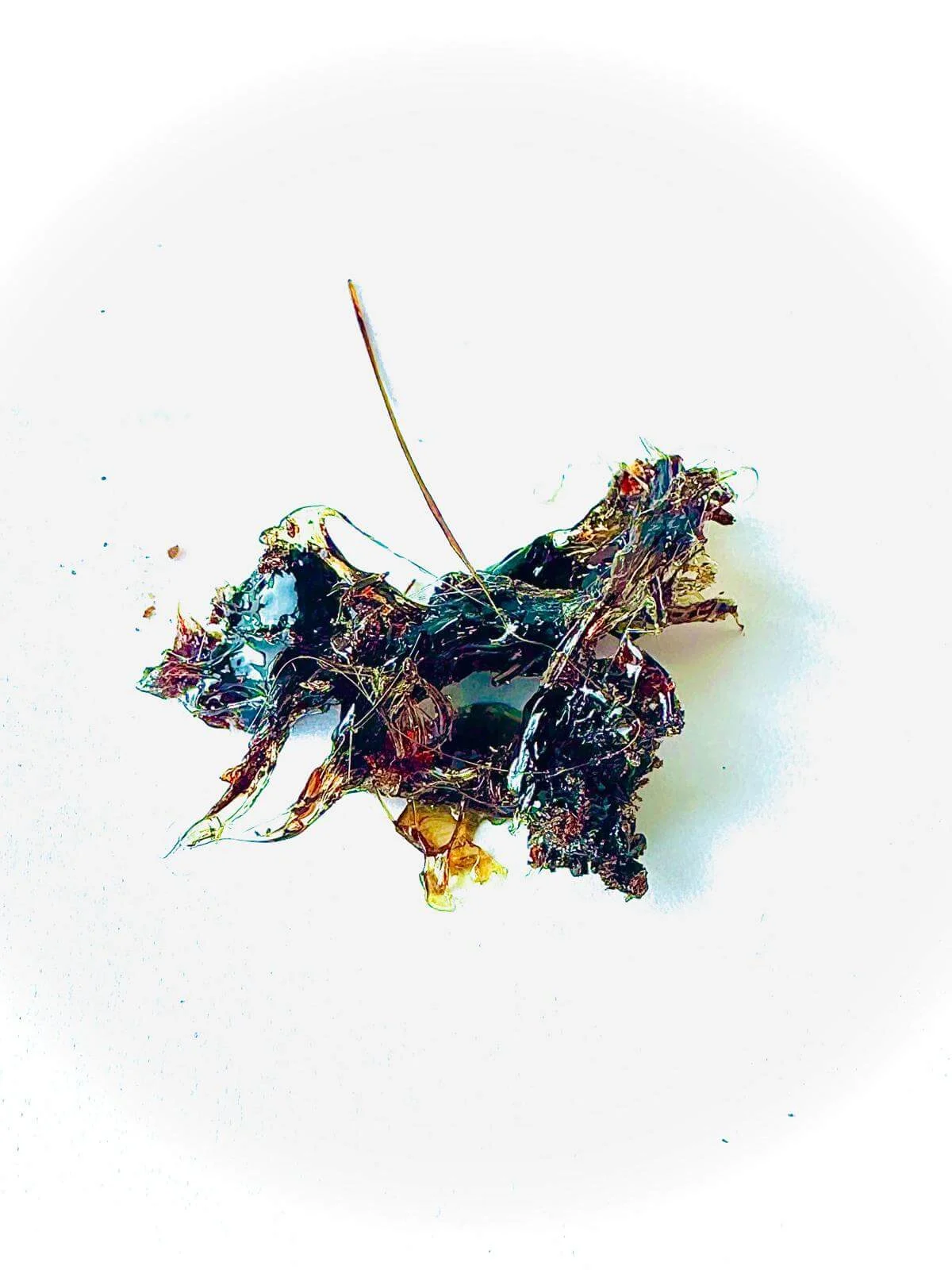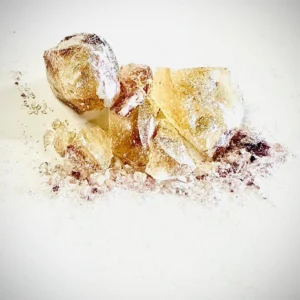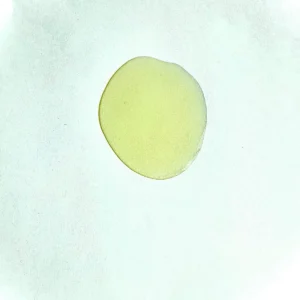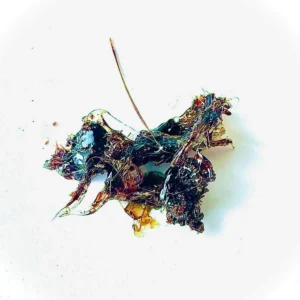What is HHCH and how is it produced?
HHCH, which stands for hexahydrocannabichlorohexol, is not naturally found in the cannabis plant, unlike many other cannabinoids such as CBD, CBN, CBG, and THC.
First synthesized in 1942 by the American chemist Roger Adams, HHCH was suggested in research to be more potent than the pentyl and heptyl homologues or unsaturated analogues of THC (tetrahydrocannabinol).
HHCH is a semi-synthetic cannabinoid derivative requiring professional laboratory production. It is formed by hydrogenation of a THCH (tetrahydrocannabinol) distillate and its conversion into HHCH.
This compound exists in the form of a thick oil that is highly viscous. It becomes more pliable with slight heating and changes color upon oxidation without compromising efficacy or causing chemical transformation.
Chemical structure and stereoisomers:
HHCH has the molecular formula C22H34O2. Being a hydrogenated compound like H4CBD and HHC, it comprises two different stereoisomers, namely molecules:
- 9(R)-hexahydrocanabihexol, also known as 9β-hexahydrocanabihexol, 9β-HHCH, 9(R)-HHCH
- 9(S)-hexahydrocannabishexol, also known as 9α-hexahydrocannabishexol, 9α-HHCH, 9(S)-HHCH
The molecule (9R) effectively binds to CB1 receptors in the endocannabinoid system (ECS), causing a psychoactive effect, while 9(S) is considered the inactive component.
Research from 2023 examining the cannabinoid HHC concluded that the 9(R) isomer binds with higher affinity to CB1 (nervous system, in the brain) and CB2 (in the immune system, digestive tract, and other organs) receptors, with 9(R)’s activity nearly identical to THC, while 9(S) binds strongly in cannabinoid receptor research but exhibits reduced activity in functional tests.
Effects of HHCH
HHCH is purported to have psychoactive effects similar to THC. These effects are believed to be milder than those of HHCP but longer-lasting compared to HHC.
There is information suggesting HHCH to be approximately 10 to 15 times more potent than THC, with its effects slightly superior to THCH. Given Roger Adams’ suggestion in his research that HHCP is more potent than the pentyl and heptyl homologues or unsaturated analogues of THC, it can be assumed that HHCP exerts a strong psychoactive effect on the body. However, further relevant research is needed to draw conclusions.
Like other cannabinoids, HHCH acts on the ECS in the body. Initial findings suggest HHCH has a higher affinity for CB1 receptors, hence causing a psychoactive effect, and also interacts with CB2 receptors, which contribute to modulating the immune system and reducing inflammation. The effects will also depend on the product’s composition, or the ratio between 9(R) and 9(S) isomers in the product.
As with other cannabinoids possessing psychoactive properties, HHCH may affect perception, induce feelings of euphoria or relaxation, and alleviate symptoms of pain and inflammation.
It is important to note that the effects of HHCH may last from 2 to 8 hours, so it should be used responsibly and in moderation. Under no circumstances should driving or operating machinery be attempted after ingestion.
Risks
There is scientific consensus that natural cannabinoids are safe for medical and recreational use, whereas synthetic cannabinoids often cannot be proven to be pure and safe. Some synthetically produced products have been found to contain unknown substances such as unnatural isomers, residual solvents, and other unrecognized compounds, making them potentially unsafe for human consumption.
Synthetic cannabinoids are artificially created cannabinoids. The legal definition is: ‘any material, compound, mixture, or preparation that contains a substance and has a similar effect to a natural cannabinoid, and that is artificially produced’.
Examples of (semi-)synthetic cannabinoids include HHC, THCB, THCO, THCP, THCH, THCJD.
These substances can be much more potent than natural cannabinoids, increasing the potential risk of overdose and poisoning. In general, the risks of using synthetic cannabinoids may include negative psychological effects such as panic, paranoia, anxiety, and hallucinations.
Other possible side effects include:
- Increased heart rate
- Headaches
- Fatigue and drowsiness
- Dry mouth
- Redness of the eyes
At this time, it is possible that other, as yet undiscovered side effects may occur. The intensity of the side effects depends on various factors such as health status, age, body proportions, metabolism, user tolerance, and the dose and method of use.
Are products with HHCH safe?
As research and development of HHCH are still in their infancy, thorough, controlled, and peer-reviewed research is needed to evaluate the effects, safety profile, and potential medical applications.
At present, it can be quite challenging to ascertain the actual cannabinoid content of unlicensed products. Moreover, it is impossible to determine if products are free of unwanted substances such as pesticides, solvents, and heavy metals unless a retailer provides third-party laboratory test analyses.
This issue also ties into the complex legislation surrounding cannabinoids worldwide. It is not straightforward to assess the safety of products when most countries, including Czechia, currently lack legislation regulating these substances. This means there is a lack of legislation to ensure safety, quality, and legality.
When purchasing products containing cannabinoids, always pay attention to the following information:
Lab results: Third-party lab reports provide objective data on product purity, compliance with regulations (maximum THC limit), safety, and more.
Ingredients: Ensure the product is free from inappropriate additives, fillers, and toxic substances.
Origin of cannabis: The best source is the freshest, locally grown cannabis free from pesticides and herbicides.
Company reputation: Seek information about the manufacturer/seller. A reputable and trusted company that has been active in the cannabis market for several years and receives positive feedback about their products and services.
Conclusion
HHCH is a semi-synthetic derivative of a cannabinoid synthesized by Roger Adams in 1942. Production requires only a professional laboratory procedure; HHCH is produced by hydrogenating THCH distillate and converting it into HHCH.
It consists of two stereoisomers, 9(R) and 9(S), with the ratio of these molecules influencing the potency and strength of the product.
Like other psychoactive cannabinoids, it may affect perception or induce feelings of euphoria or relaxation.
The cannabis market already offers HHCH vape pens, cartridges, and vaping liquids, oils, distillates, flower, and hash. Users should approach HHCH products with caution and consider all risks before making a purchase. Currently, there are no scientific studies assessing the safety of this substance.
Compounds of this type can be much more potent than natural cannabinoids, increasing the risk of overdose and poisoning.
When purchasing cannabis products, always choose reliable and controlled companies that have their products tested by an independent laboratory.
